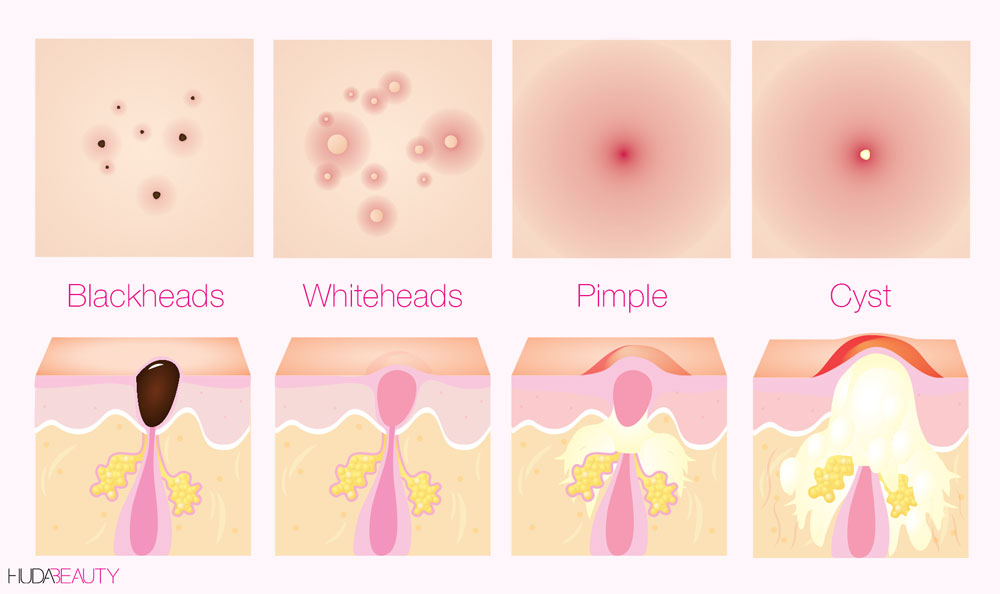How To Treat Cystic Acne At Home

If there’s one skincare issue that we’re determined to address, it’s acne, and the key to treating something efficiently is to fully understand the problem first. So when we decided to study cystic acne, we turned to New York’s skincare queen and surgical dermatologist, Dr. Doris Day, for all the info. Not only has she written a book about acne but she’s our most trusted advisor when it comes to understanding what cystic acne really is and how we should deal with it whenever we break out.
What Causes Cystic Acne?
“Cystic acne is an infection that goes deep into your skin and occurs when a pore becomes blocked; either with dead skin cells or other trapped bacteria. The pore then becomes inflamed, red, and is often pretty painful! The bump is normally full of pus and can burst; if this does happen it can spread the infection, leading to more breakouts,” Dr. day told us.
What is Cystic Acne?
Cystic acne: “What differentiates a pimple from a cyst is that a cyst has a true lining. We can shrink cysts but they’re still there and can regrow.”
Pimples: A pimple is a condition where there’s inflammation is at the base of the pore. There’s usually a bacteria (called p.acnes) that lives there and grows under the condition of low or no oxygen, which can happen when the pore closes. The skin cells lining the pore can also pile up and that makes whiteheads and blackheads.”
Different Types of Pimples
Treating your skin can be really tricky, especially if you don’t know what you’re dealing with. To make sure you never have a mix-up and end up making your skin worse, here’s how to identify each spot and the best way to tackle it:

Whitehead: A hair follicle that’s blocked by dead skin cells piling up after the follicle opening gets blocked, but it’s smaller and less inflamed than a Cyst. You should never pop a white head but instead, apply a topical spot cream combined with retinoid cream.
Blackhead: A blackhead is actually a whitehead that pushes through and is then exposed to oxygen, which oxidizes the contents and makes them turn black. To get rid of a blackhead, use a blackhead extractor – here’s how to do it like a pro.
Pimple: An overgrowth of bacteria which stimulates an immune response that creates redness, swelling, pain and sometimes pus. DIY: Lightly press a hot flannel onto your skin, then dab tea tree oil or a piece of fresh ginger onto the blemish. (We love this drying lotion for shrinking pimples overnight).
Cyst: Cysts tend to be more painful, larger, redder and raised than a white head.
How To Treat Cystic Acne At Home
The underlying cause of cystic acne is not yet fully known. It may be genetic, where some people are more prone to cysts than others, or it can be hormonal. But there are things that you can do to help treat it:
Exfoliate: Firstly, it’s important to exfoliate regularly using a chemical exfoliator as this will dissolve all the dead skin cells and promote skin generation, helping your cystic acne heal. Once or twice a week should be plenty. Look for exfoliators made up of AHA’s (like glycolic, lactic or citric acid) and BHA’s (like salicylic acid) as these will be absorbed deeper into your pores and will work as an anti-inflammatory and are antibacterial. Our fav dual chemical exfoliator is The Ordinary’s, AHA 30% + BHA 2% Peeling Solution, $12.
Remove makeup: If there’s one thing you need to do every night, it’s take your makeup off at the end of the day. With cystic acne, your skin really needs time to breathe and repair without any product clogging your pores. We recommend double cleansing to ensure your skin is thoroughly cleansed.
Tone: Make sure you use a toner daily, it’ll restore your skin’s pH balance while also tightening and cleaning your pores, reducing the penetration of environmental impurities. Look for a toner that contains salicylic acid as this will allow the toner to go much deeper into your pores due to its unique molecular structure. We love the Caudalie Vinopure Natural Salicylic Acid Pore Minimizing Toner, $28.
Don’t pick: Never try to pop cysts at home as it can lead to infection and scarring. Cysts should always be handled by your dermatologist.
Cystic Acne Treatments at the Doctor’s Office:
While there are lots of things you can do at home to help your skin, sometimes a trip to a derm can also be hugely beneficial. Dr. Day says, “We can do treatments such as chemical peels with salicylic acid that are stronger than over the counter products. I also do (gentle) cortisone injections to help shrink the cysts and I sometimes use oral or topical antibiotics if they are very inflamed. If the cyst has come to a head – meaning if there is a clear opening to the surface – I can do an incision and drainage where I open the cyst and remove the contents.”
The main thing to remember with cystic acne is not to pick it, as this will often make it worse, and more likely to come back. For more skincare wisdom from Dr. Doris Day, read this post for tips on how to deal with your acne like a pro.




















Leave a comment